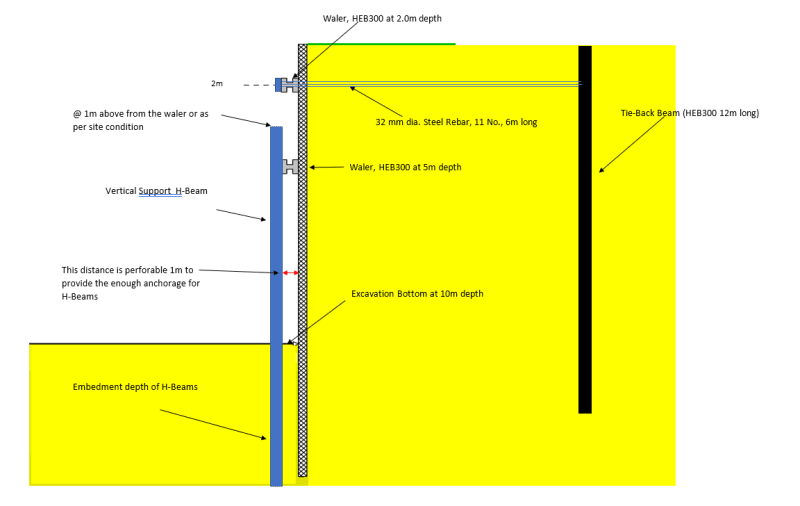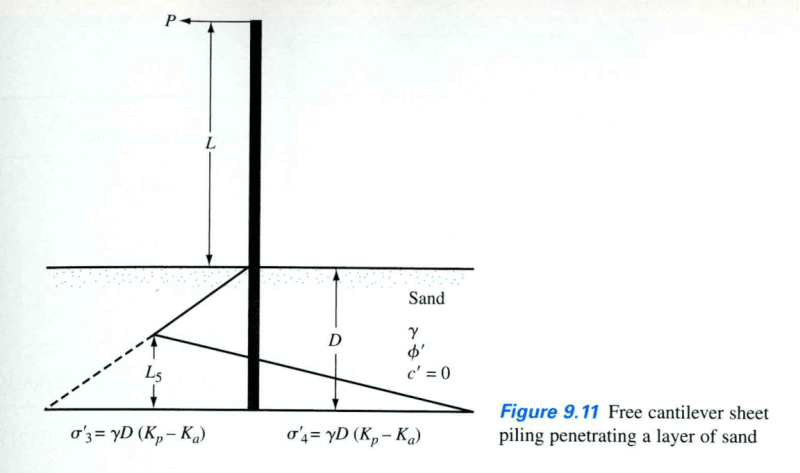Khurram Shehzad
Geotechnical
We have a 8m deep excavation in sandy soil, as per design we need to provide two levels of bracing. At top level (at 2m depth) we are using Deadman anchors. However, for 2nd level (waler is at 5m depth) our client is asking to install the H-beam in front of sheet piles so that load can be taken by the vertical H-beams. This is to safe the space inside excavation. We are not allowed to install the ground anchors. So now I have to do the Vertical beams calculation but I am unable to find any calculation related to this, can any body please help. I am attaching one schematic drawing for under standing. I need the calculation for H-Beam (blue color) in drawing.

![[idea] [idea] [idea]](/data/assets/smilies/idea.gif)

